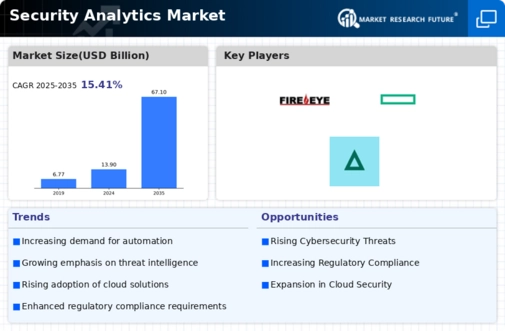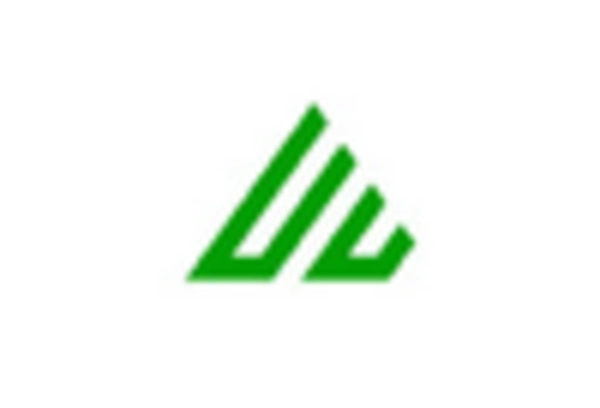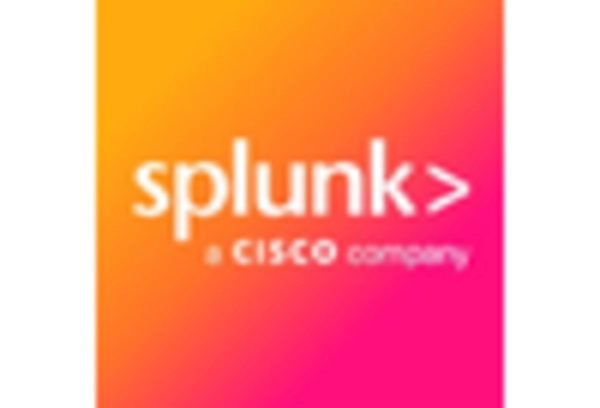Rising Cybersecurity Threats
The increasing frequency and sophistication of cyber threats is a primary driver for the Security Analytics Market. Organizations are facing a surge in cyberattacks, including ransomware, phishing, and advanced persistent threats. According to recent data, the number of reported cyber incidents has escalated by over 30 percent in the past year alone. This alarming trend compels businesses to invest in robust security analytics solutions to detect, analyze, and respond to threats in real-time. As a result, the demand for advanced security analytics tools is expected to grow, with the market projected to reach a valuation of several billion dollars by 2026. The need for proactive threat detection and incident response capabilities is likely to drive innovation and adoption within the Security Analytics Market.
Adoption of Advanced Technologies
The integration of advanced technologies such as machine learning and artificial intelligence is reshaping the Security Analytics Market. These technologies enable organizations to analyze vast amounts of data quickly and accurately, identifying patterns and anomalies that may indicate security threats. The market is witnessing a notable increase in the adoption of these technologies, with estimates suggesting that AI-driven security analytics solutions could account for a significant portion of the market share by 2027. This technological advancement not only enhances threat detection capabilities but also streamlines incident response processes, making organizations more resilient against cyber threats. As businesses recognize the value of leveraging advanced analytics, the demand for innovative security solutions is likely to surge within the Security Analytics Market.
Regulatory Compliance Requirements
The evolving landscape of regulatory compliance is significantly influencing the Security Analytics Market. Organizations are increasingly required to adhere to stringent regulations regarding data protection and privacy, such as the General Data Protection Regulation (GDPR) and the California Consumer Privacy Act (CCPA). Non-compliance can result in hefty fines and reputational damage, prompting businesses to prioritize security analytics solutions that ensure compliance. The market for security analytics is projected to grow as companies seek to implement systems that not only protect sensitive data but also provide audit trails and reporting capabilities. This trend indicates a shift towards integrated security solutions that align with compliance mandates, thereby enhancing the overall security posture of organizations within the Security Analytics Market.
Increased Investment in IT Security
The growing recognition of cybersecurity as a critical business priority is driving increased investment in IT security, thereby impacting the Security Analytics Market. Organizations are allocating larger portions of their budgets to cybersecurity initiatives, with some reports indicating that IT security spending could exceed hundreds of billions of dollars annually by 2025. This trend reflects a broader understanding of the potential financial and operational impacts of security breaches. As companies seek to bolster their defenses, the demand for comprehensive security analytics solutions is expected to rise. This investment trend not only supports the development of more sophisticated security tools but also fosters a culture of security awareness within organizations, ultimately enhancing the effectiveness of the Security Analytics Market.
Growing Need for Real-Time Threat Detection
The necessity for real-time threat detection is becoming increasingly apparent in the Security Analytics Market. Organizations are recognizing that traditional security measures are often insufficient to combat modern cyber threats, which can evolve rapidly. The demand for solutions that provide real-time monitoring and analytics is on the rise, as businesses seek to mitigate risks before they escalate into significant incidents. Market forecasts suggest that the segment for real-time security analytics could experience substantial growth, driven by the need for immediate threat identification and response capabilities. This shift towards proactive security measures is likely to redefine the landscape of the Security Analytics Market, as organizations prioritize tools that offer timely insights and actionable intelligence.

















Leave a Comment